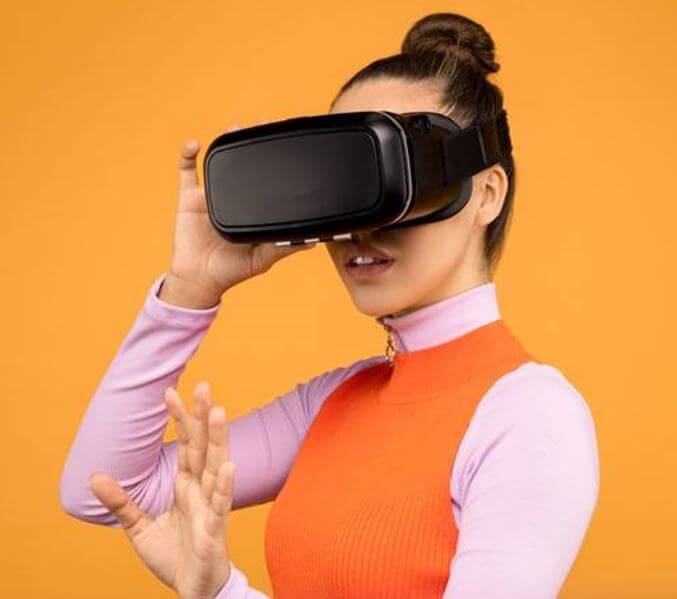Imagine swimming alongside sharks in the middle of the Pacific Ocean or setting up camp near the peak of Mt. Everest. All these within the comfort of your living room through a virtual reality headset. More amazingly, you can even journey through brain tissues and neurons, go on a wild safari, or virtually participate in a video game. Virtual reality within the classroom can make all these things possible within a day. VR is now setting the pace for future teaching as well as learning. Below are 9 benefits of Virtual Reality in education.

[no_toc]
Table of Contents
Virtual Classrooms
This groundbreaking technology can enable tutors to identify the precise learning needs of different students. It also makes it easier to explain difficult or confusing concepts. It enhances the rate at which students absorb content as well as their overall engagement. It will enable educational stakeholders to gain a new and more innovative perspective on the improvement of learning.
Vocational Training and Education
Vocational training can be made possible through VR applications such as zSpace. In addition to this, learners can attain career and technical education (CTE) via the same technology. Through such an application, it is possible to obtain special career training for varied professions. Students can, therefore, find it easier to determine their career paths.
Virtual Travel Through Space and Time
History students can take a trip through space and time through virtual reality. Some applications enable students to discover antique remnants and travel deep under the ocean to study shipwrecks. They can discover hidden information about the most breathtaking artificial structures on our planet.
Biographical VR applications enable students to learn about various historical figures and personalities. Consequently, they become good at completing assignments in the respective subjects and minimizes the need for essay writing service.
Encourages VR-Based Content Creation
Content creation in a virtualized environment enables students to visualize the information they learn. It offers a different perspective on learning. For instance, some applications allow students to paint in 3D space in addition to sharing their works in the form of animated GIFs. The same applies to architectural and design students who can use such apps to generate amazing drawings.
Multiple Sensory Experiences
Even though tablet computers enhanced the versatility of digital content, these devices are no match for Virtual Reality Technologies. Through VR, you can enjoy a kinesthetic experience. You can make movements within a virtual environment and interact with elements. It is a highly engaging way to teach students.
Amazing Abilities
Virtual reality technology can enable a student to undertake tasks that are usually not possible in normal life. For instance, it can enable you to lift a car over your head and inspect its engine. You can even paint using a flame or utilize the mechanics of teleportation locomotion.
In essence, you can defy the laws of physics as you open up novel educational possibilities within the classroom. Students can also streamline tasks that are time-consuming to provide ample time for repetition and extra learning experiences.
Real-Time Autonomy
When someone uses VR, they become the master of their individual experience. Virtual reality provides a high degree of autonomy in the manner in which learners interact with information. It begins with the basic fact that the individual can select what to look at.
After that, it expands to offer unbridled experiences that enable one to explore freely. Allowing students such kind of autonomy in a virtual space eliminates the need to stick with the group. They can thus be able to learn at their own pace.
Virtual Rehearsals
The concept of virtually rehearsing a skill or information is gaining momentum within the learning and development and training departments in numerous industries. The use of VR to sharpen skills without fearing failure is immensely powerful.
It can as well assist students in enhancing their confidence in other areas of learning. Such areas could involve public-speaking practice, Virtualized speech, or even dissection apps for biological studies. It has the potential to make great savings on finances.
Enhanced Immersion in Learning
By nature, VR is a framed experience within a headset. What this means is that the student is less culpable to distractions within their physical environment. Some students can find this practice to be greatly beneficial since they could be having short attention spans.
Of course, some students like the VR space so much that they’d rather do nothing but explore the incredible worlds created for the advanced headsets. This is why, some learners just buy an essay (or any other required assignment for homework), hand it in, and have more time to explore and use the VR headset however they want.
Parting Shot
Virtual reality in education holds numerous opportunities and possibilities to inspire an entire generation. Very soon, it will radically change the entire educational landscape and offer numerous learning and creative opportunities.